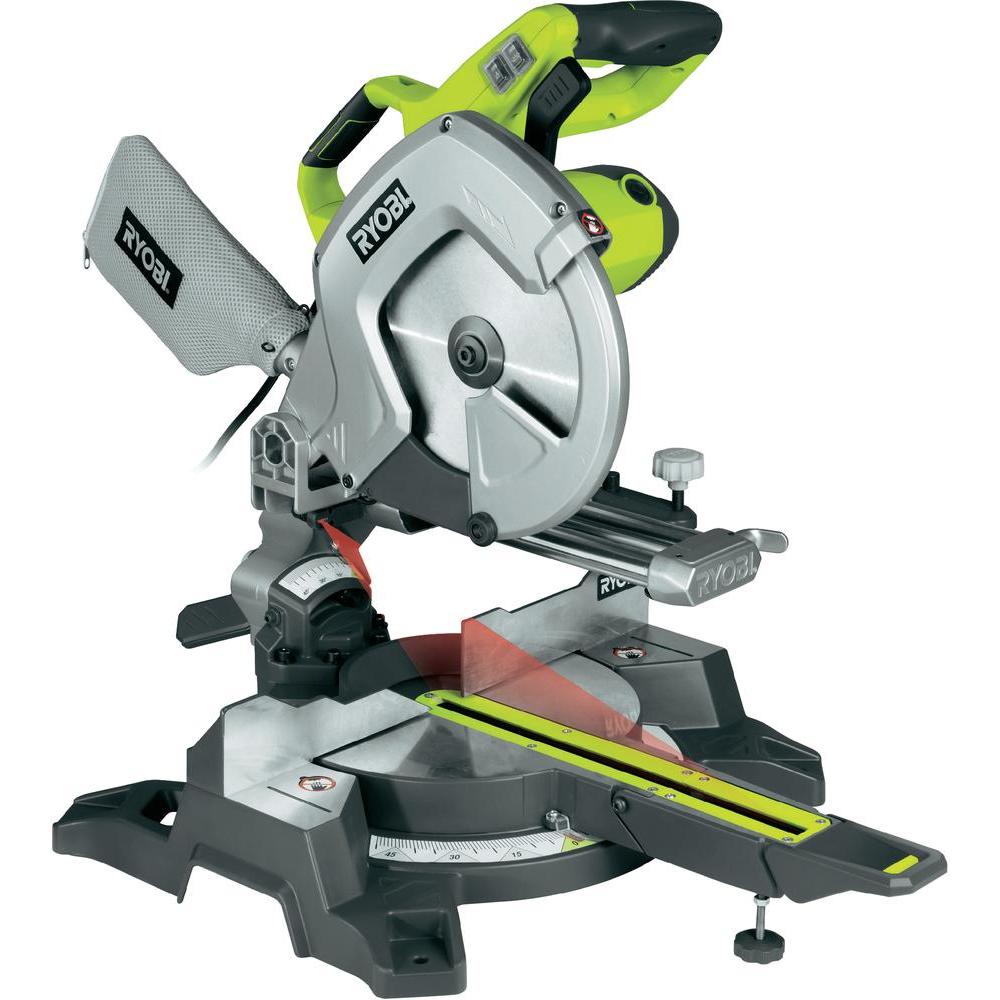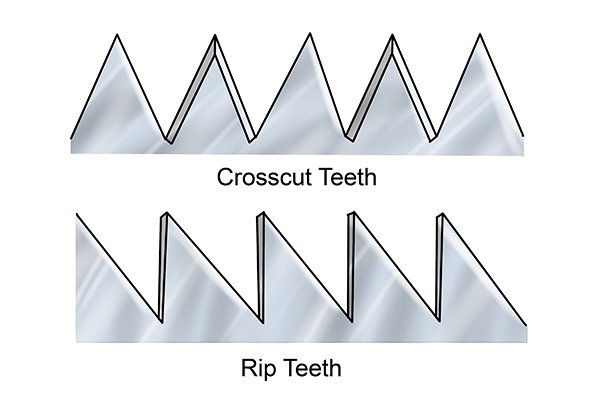There are two fundamentally different ways to cut wood, with or across the grain. Wood grain is important because it affects the shape of saw teeth. A rip-cut comes from rip: to split or saw timber in the direction of the grain, and cut: to divide with a sharp-edged instrument. It needs a saw with a blade that chisels the wood. In contrast, a cross-cut, splits or saws the wood perpendicular to the grain, it needs a blade that shears the wood fibers. Blades that rip-cut well do not cross-cut well.
Most woodworkers use one type of electric saw to rip-cut and a different type of electric saw to cross-cut. While cross-cutting with a blade designed for rip-cutting, is not energy efficient it is not dangerous, rip-cutting with a saw designed for cross-cutting is worse, because it can be very dangerous. Circular saw blades designed for rip-cutting have a smaller number of larger teeth than similar blades designed for cross-cutting.
These two different saws are referred to as table saws (for rip-cutting) and mitre saws (for cross-cutting). Other names for these saws are used. The problem with the name table saw, is that it is a descriptive name, rather than a functional name. Yes, it is a saw with a blade that emerges from a table. A functional name, would be to refer to it as a rip saw, perhaps even a stationary electric rip saw. This name focuses on the primary task of the saw, which is to make rip-cuts.

The name mitre saw has even more problems associated with it. However, the term chop saw (which is also used) at least provides it with a functional name. What we referred to as a table saw in the previous paragraph, also makes mitre cuts. Indeed it almost always comes with a mitre gauge to facilitate these cuts. However, given a choice, it is more efficient to use a saw referred to as a mitre saw. Both types of saws also make bevel cuts, which require the saw blade to change its angle with respect to a base, or table. A functional name, would be to refer to it as a cross-cut saw, perhaps even a stationary electric cross-cut saw. This name focuses on the primary task of the saw, which is to make cross-cuts. Even using the name chop saw would be better than mitre saw.

The most important reason for opting to use a functional tool name is safety. While most professional woodworkers are informed about the differences between rip-cut and cross-cut saws, and the hazards of using cross-cut saws to make rip-cuts, this will not be reinforced if this function is missing from the tool name.
At the Unit One workshop, we now have a (stationary electric) rip-cut saw and a (stationary electric) cross-cut saw. In the future, tool names will be reviewed to ensure that functional rather than descriptive names are used. It is a safety issue.
Update: The illustration below shows the difference between saw teeth used for ripping, and those used for crosscutting.

This weblog post was updated 2021/12/21. to eliminate Seeds from the title. This post formed part of a Needs, Seeds and Weeds website that belonged to my daughter, Shelagh. In addition, other things are also out of date, or my opinions have changed. Apart from the title, updating the text to a block format and other minor formatting changes, the text above this paragraph remains as it was before. Any significant content changes are found below this paragraph.

